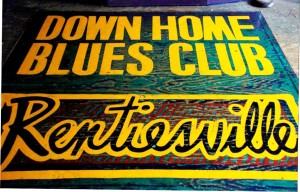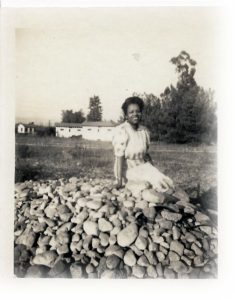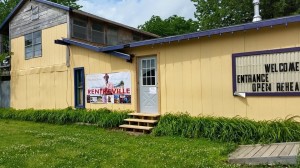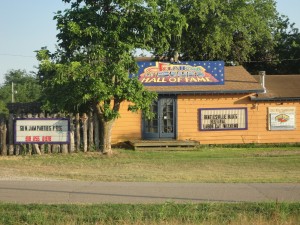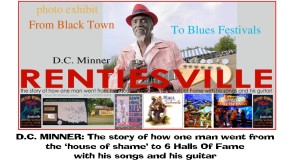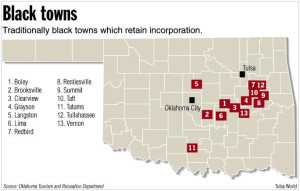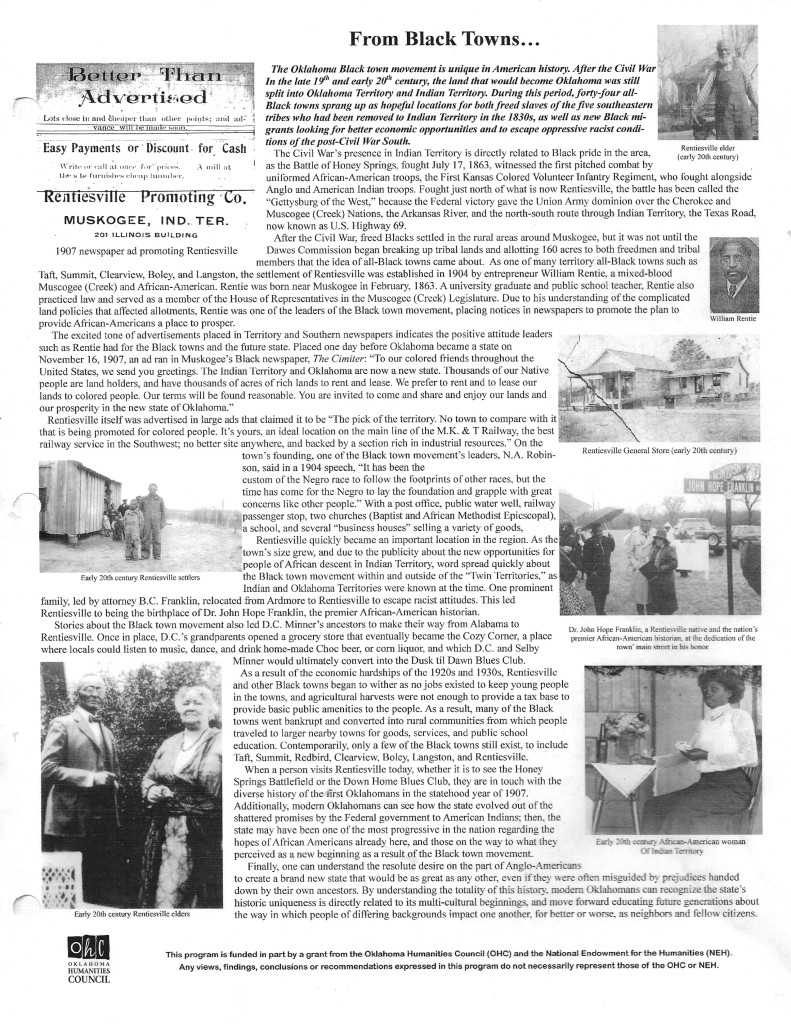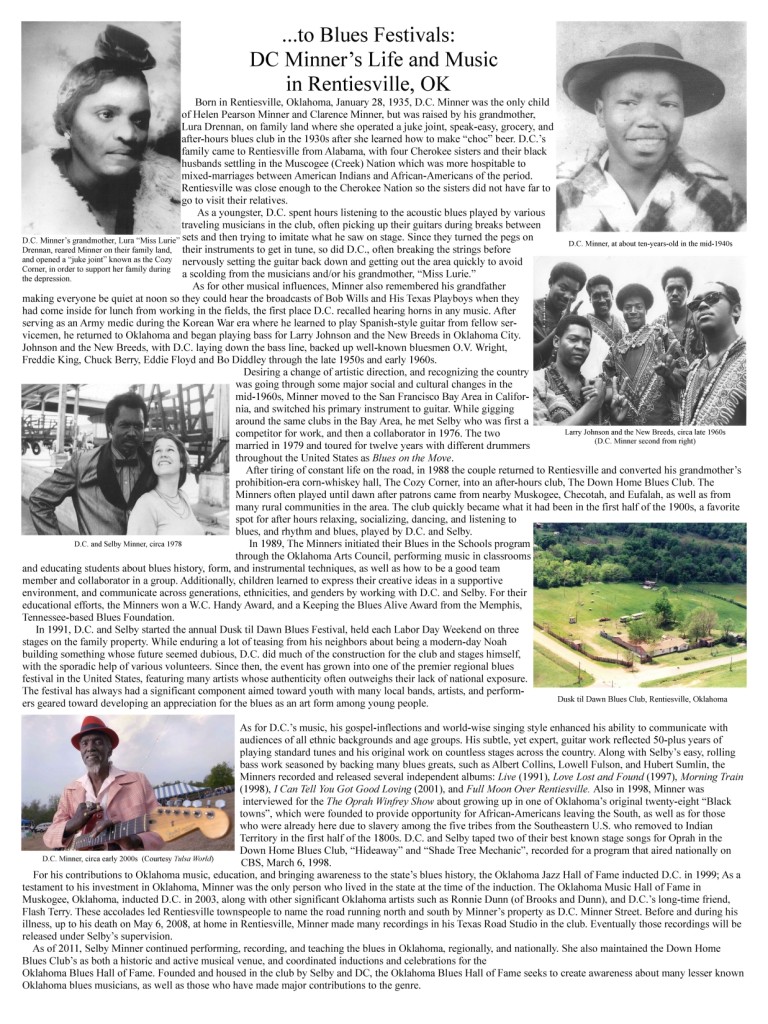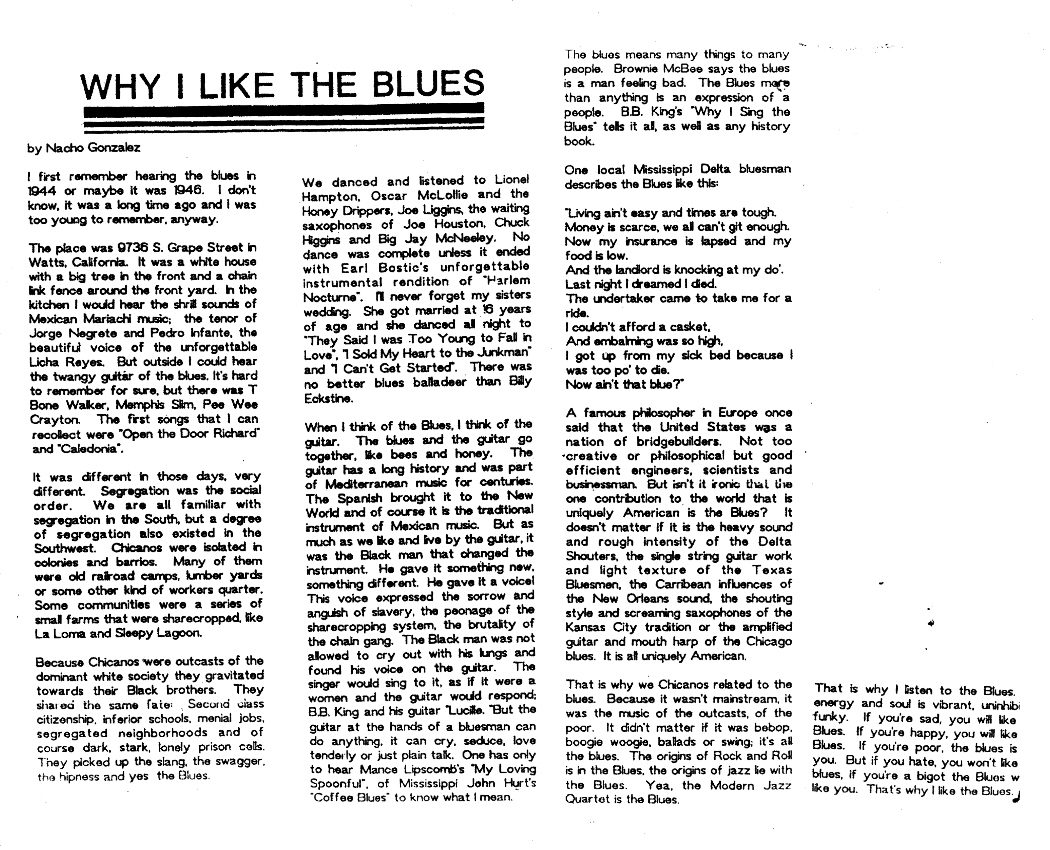Rentiesville is one of the remaining 13 All-Black towns in Oklahoma and they represent a unique chapter in American history. Nowhere else, neither in the Deep South nor in the Far West, did so many African American men and women come together to create, occupy, and govern their own communities. From 1865 to 1920 African Americans created more than fifty identifiable towns and settlements, some of short duration and some still existing at the beginning of the twenty-first century.
 All-Black towns like Rentiesville grew in Indian Territory after the Civil War when the former slaves of the Five Tribes settled together for mutual protection and economic security. When the United States government forced American Indians to accept individual land allotments, most Indian “freedmen” chose land next to other African Americans. They created cohesive, prosperous farming communities that could support businesses, schools, and churches, eventually forming towns. Entrepreneurs in these communities started every imaginable kind of business, including newspapers, and advertised throughout the South for settlers. Many African Americans migrated to Oklahoma, considering it a kind of “promised land.”
All-Black towns like Rentiesville grew in Indian Territory after the Civil War when the former slaves of the Five Tribes settled together for mutual protection and economic security. When the United States government forced American Indians to accept individual land allotments, most Indian “freedmen” chose land next to other African Americans. They created cohesive, prosperous farming communities that could support businesses, schools, and churches, eventually forming towns. Entrepreneurs in these communities started every imaginable kind of business, including newspapers, and advertised throughout the South for settlers. Many African Americans migrated to Oklahoma, considering it a kind of “promised land.”
When the Land Run of 1889 opened yet more “free” land to non-Indian settlement, African Americans from the Old South rushed to newly created Oklahoma. E. P. McCabe, a former state auditor of Kansas, helped found Langston and encouraged African Americans to settle in that All-Black town. To further his cause, McCabe established the Langston City Herald and circulated it, often by means of traveling agents, throughout the South. McCabe hoped that his tactics would create an African American political power block in Oklahoma Territory. Other African American leaders had a vision of an All-Black state. Although this dream was never realized, many All-Black communities sprouted and flourished in the rich topsoil of the new territory and, after 1907, the new state.
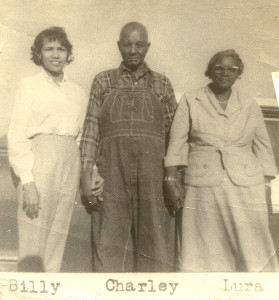 In those towns African Americans lived free from the prejudices and brutality found in other racially mixed communities of the Midwest and the South. African Americans in Oklahoma and Indian Territories would create their own communities for many reasons. Escape from discrimination and abuse would be a driving factor. All-Black settlements offered the advantage of being able to depend on neighbors for financial assistance and of having open markets for crops. Arthur Tolson, a pioneering historian of blacks in Oklahoma, asserts that many African Americans turned to “ideologies of economic advancement, self-help, and racial solidarity.”
In those towns African Americans lived free from the prejudices and brutality found in other racially mixed communities of the Midwest and the South. African Americans in Oklahoma and Indian Territories would create their own communities for many reasons. Escape from discrimination and abuse would be a driving factor. All-Black settlements offered the advantage of being able to depend on neighbors for financial assistance and of having open markets for crops. Arthur Tolson, a pioneering historian of blacks in Oklahoma, asserts that many African Americans turned to “ideologies of economic advancement, self-help, and racial solidarity.”
Marshalltown, North Fork Colored, Canadian Colored, and Arkansas Colored existed as early as the 1860s in Indian Territory. Other Indian Territory towns that no longer exist include Sanders, Mabelle, Wiley, Homer, Huttonville, Lee, and Rentie. Among the Oklahoma Territory towns no longer in existence are Lincoln, Cimarron City, Bailey, Zion, Emanuel, Udora, and Douglas. Towns that still survive are Boley, Brooksville, Clearview, Grayson, Langston, Lima, Red Bird, Rentiesville, Summit, Taft, Tatums, Tullahassee, and Vernon. The largest and most renowned of these was Boley. Booker T. Washington, nationally prominent African American educator, visited Boley twice and even submitted a positive article on the town to Outlook Magazine in 1908.
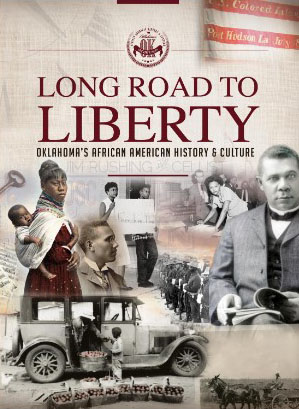
White distrust also limited the growth of these All-Black towns. As early as 1911 whites in Okfuskee County attempted to block further immigration and to force African Americans into mixed but racially segregated communities incapable of self-support. Several of these white farmers signed oaths pledging to “never rent, lease, or sell land in Okfuskee County to any person of Negro blood, or agent of theirs; unless the land be located more than one mile from a white or Indian resident.” To further stem the black migration to eastern Oklahoma a similar oath was developed to prevent the hiring of “Negro labor.”
 Events of the 1920s and 1930s spelled the end for most black communities. The All-Black towns in Oklahoma were, for the most part, small agricultural centers that gave nearby African American farmers a market. Prosperity generally depended on cotton and other crops. The Great Depression devastated these towns, forcing residents to go west and north in search of jobs. These flights from Oklahoma caused a huge population decrease in black towns.
Events of the 1920s and 1930s spelled the end for most black communities. The All-Black towns in Oklahoma were, for the most part, small agricultural centers that gave nearby African American farmers a market. Prosperity generally depended on cotton and other crops. The Great Depression devastated these towns, forcing residents to go west and north in search of jobs. These flights from Oklahoma caused a huge population decrease in black towns.
As people left, the tax base withered, putting the towns in financial jeopardy. In the 1930s many railroads failed, isolating small towns in Oklahoma from regional and national markets. As a result, many of the black towns could not survive. During lean years whites would not extend credit to African Americans, creating an almost impossible situation for black farmers and businessmen to overcome. Even one of the most successful towns, Boley, declared bankruptcy in 1939. Today, only thirteen historical All-Black towns still survive, but their legacy of economic and political freedom is well remembered. A fourteenth town, IXL, is new, incorporated in 2001.
Boley, Oklahoma
 Boley is the largest and most prominent of all historically Black towns of Oklahoma. Boley was allotted to Abigail, the daughter of Muscogee (Creek) Freedman, James Barnett, and was named after J.B. Boley, a white man who believed Black people could govern themselves. The town was founded in 1903 and incorporated in 1905. The Boley Progress newspaper (1905) spread the word through the South. By Oklahoma’s 1907 statehood, Boley had blossomed to a population of 824 people. At its height in 1911, it had a population over 4,000 and consisted of five grocery stores, five hotels, seven restaurants, four cotton gins, and more. Boley had the first Black-owned electric company and one of the first Black-owned banks. The town also supported two colleges, Creek Seminole College and Methodist Episcopal College. Today, the population has dwindled to just over one thousand, but the town still hosts the nation’s oldest African American community-based rodeo, the Boley Rodeo and Barbeque Festival, on Memorial Day weekend. The downtown business district is listed in the National Register of Historic Places (NR 75001568) and has been designated a National Historic Landmark by the National Park Service (1975).
Boley is the largest and most prominent of all historically Black towns of Oklahoma. Boley was allotted to Abigail, the daughter of Muscogee (Creek) Freedman, James Barnett, and was named after J.B. Boley, a white man who believed Black people could govern themselves. The town was founded in 1903 and incorporated in 1905. The Boley Progress newspaper (1905) spread the word through the South. By Oklahoma’s 1907 statehood, Boley had blossomed to a population of 824 people. At its height in 1911, it had a population over 4,000 and consisted of five grocery stores, five hotels, seven restaurants, four cotton gins, and more. Boley had the first Black-owned electric company and one of the first Black-owned banks. The town also supported two colleges, Creek Seminole College and Methodist Episcopal College. Today, the population has dwindled to just over one thousand, but the town still hosts the nation’s oldest African American community-based rodeo, the Boley Rodeo and Barbeque Festival, on Memorial Day weekend. The downtown business district is listed in the National Register of Historic Places (NR 75001568) and has been designated a National Historic Landmark by the National Park Service (1975).
Brooksville, Oklahoma
Located in Pottawatomie County four miles southwest of Tecumseh, Brooksville was established in 1903. The town was initially named Sewell, after a white doctor who owned much of the surrounding land. The name was changed to Brooksville in honor of the first African American in the area, A. R. Brooks, a cotton buyer and farmer. His son, W. M. Brooks, became the town’s first postmaster. In 1906 Rev. Jedson White organized St. John’s Baptist Church. Soon afterward, the congregation built a church that still exists today. The Banneker School was built in 1924, with the aid of the Rosenwald Fund. George W. McLaurin, the first Black graduate student at the University of Oklahoma, taught at the school. A declining cotton market and the Great Depression made life difficult in Brooksville, as in many Oklahoma communities. Most of the residents departed, but the town survived. It was incorporated in October 1972, and the census reported populations of 46 and 69 in 1980 and 1990, respectively. At the turn of the twenty-first century Brooksville had 90 residents, but by 2010 the number had dropped to 63.
Clearview, Oklahoma
 Clearview (Okfuskee County) was founded in 1903 by J. A. Roper, Lemuel Jackson, and John Grayson, the three men forming the Lincoln Townsite Company to attract settlers. Originally named Lincoln with the original post office, the name was changed to Abelincoln in 1904 and rescinded a month later. Clearview was home of the Lincoln Tribune that would later become the Clearview Patriarch. John Grayson became the first postmaster. By 1904, the town was home to a two-story hotel and a print shop as well as a brick school building and two churches. By 1911, J. E. Thompson moved to Clearview after Roper and Jackson departed. The 1907 population of 618 declined to only 48 in the 2010 US Census. Although small in population, Clearview still hosts its annual rodeo. Clearview is the home of the Oklahoma African American Educators Hall of Fame (OAAEHOF).
Clearview (Okfuskee County) was founded in 1903 by J. A. Roper, Lemuel Jackson, and John Grayson, the three men forming the Lincoln Townsite Company to attract settlers. Originally named Lincoln with the original post office, the name was changed to Abelincoln in 1904 and rescinded a month later. Clearview was home of the Lincoln Tribune that would later become the Clearview Patriarch. John Grayson became the first postmaster. By 1904, the town was home to a two-story hotel and a print shop as well as a brick school building and two churches. By 1911, J. E. Thompson moved to Clearview after Roper and Jackson departed. The 1907 population of 618 declined to only 48 in the 2010 US Census. Although small in population, Clearview still hosts its annual rodeo. Clearview is the home of the Oklahoma African American Educators Hall of Fame (OAAEHOF).
https://www.facebook.com/groups/265956723753806
Grayson, Oklahoma
Grayson is located in Okmulgee County and was originally known as Wildcat. The town was named for Muscogee (Creek) Chief George W. Grayson. Its post office was established in 1902 and closed in 1929. By 1909, the town was the home of five general stores, two blacksmiths, two drug stores, and more. At statehood the population was 375 residents but the population declined to 159 in the 2000 census.
IXL, Oklahoma
IXL in Okfuskee County was the name of a widely dispersed African American community located on four sections of Muscogee (Creek) Freedmen land allotments. The cemetery records the internments of African Americans whose descendants remained in the area. The town received a grant from the Julius Rosenwald Fund in 1926-27 to build a school building to serve the IXL District School 12, a separate school. IXL was also granted funds for a teacherage for the faculty. Residents created a fire department and built a fire station, and on October 24, 2001, citizens incorporated a four-square-mile area and set up a town form of government with a mayor and council. The schoolhouse, funded by the Julius Rosenwald Fund, was demolished to make way for a Community Building erected in 2012. IXL had a population of 51 in the 2010 census.
Langston, Oklahoma
 Named after John Mercer Langston, African American educator and US representative from Virginia, Langston was founded April 22, 1890, by E.P. McCabe on the land of Charles Robbins. Both men filed a plat in 1891. E.P. McCabe began the Langston City Herald and used it to promote African American migration to Oklahoma and Langston. A Roman Catholic mission was established in 1893 by Reverend Bishop Theophile Meerschaert. In 1897, the Colored Agricultural and Normal University was established and later became Langston University, Oklahoma’s historically Black University. Langston has been the home or chosen educational location of many Oklahomans, including Ada Lois Sipuel Fisher, Clara Luper, E. Melvin Porter, Zelia Breaux, and Inman Page. Langston University Cottage Row Historic District was listed in the National Register of Historic Places in 1998. The Morris House was listed in 1994 and the Ozark Trail Indian Meridian Obelisk was listed in 2017. The 2010 census listed 1,724 residents still in Langston.
Named after John Mercer Langston, African American educator and US representative from Virginia, Langston was founded April 22, 1890, by E.P. McCabe on the land of Charles Robbins. Both men filed a plat in 1891. E.P. McCabe began the Langston City Herald and used it to promote African American migration to Oklahoma and Langston. A Roman Catholic mission was established in 1893 by Reverend Bishop Theophile Meerschaert. In 1897, the Colored Agricultural and Normal University was established and later became Langston University, Oklahoma’s historically Black University. Langston has been the home or chosen educational location of many Oklahomans, including Ada Lois Sipuel Fisher, Clara Luper, E. Melvin Porter, Zelia Breaux, and Inman Page. Langston University Cottage Row Historic District was listed in the National Register of Historic Places in 1998. The Morris House was listed in 1994 and the Ozark Trail Indian Meridian Obelisk was listed in 2017. The 2010 census listed 1,724 residents still in Langston.
Lima, Oklahoma
Located between Seminole and Wewoka in Seminole County, Lima was named for the local limestone quarries and was occupied by Seminoles and Seminole Freedmen at the turn of the twentieth century. The first postmaster was Grudge V. Gross, and the town of Lima was incorporated in 1913. The town was home to the Lima Observer. Lima is home to Rosenwald Hall, one of the few remaining All-Black pre-WPA-era schools. It was listed in the National Register of Historic Places in 1984. The discovery of the Greater Seminole Oil Field in 1926 brought white settlers to a separate village east of Lima called New Lima. Following the decline in the oil boom, the population dropped, and only 53 residents remained in 2010.
Red Bird, Oklahoma
 Located in Wagoner County, the town Red Bird was settled by the Barber and Ruffin families. E. L. Barber organized First Baptist Church and became Red Bird’s first justice of the peace and served as one of its mayors. The post office was official in 1902, and A. White was its first postmaster. More than 600 attended the grand opening at Red Bird in 1907. Professor J. F. Cathey planned Miller Washington High School in 1919, which was open until 1959. I. W. Lane, former mayor of Red Bird, challenged a law that made it difficult for African Americans to register to vote in Wagoner County. The population of Red Bird declined following the falling cotton prices after World War I and the onset of the Great Depression. By the 2010 census, Red Bird’s population was only 137. Miller Washington High School and Red Bird City Hall were listed in the National Register of Historic Places, both in 1984.
Located in Wagoner County, the town Red Bird was settled by the Barber and Ruffin families. E. L. Barber organized First Baptist Church and became Red Bird’s first justice of the peace and served as one of its mayors. The post office was official in 1902, and A. White was its first postmaster. More than 600 attended the grand opening at Red Bird in 1907. Professor J. F. Cathey planned Miller Washington High School in 1919, which was open until 1959. I. W. Lane, former mayor of Red Bird, challenged a law that made it difficult for African Americans to register to vote in Wagoner County. The population of Red Bird declined following the falling cotton prices after World War I and the onset of the Great Depression. By the 2010 census, Red Bird’s population was only 137. Miller Washington High School and Red Bird City Hall were listed in the National Register of Historic Places, both in 1984.
Rentiesville, Oklahoma
 In 1903, on property owned by William Rentie and Phoebe McIntosh, the town of Rentiesville was founded in McIntosh County. J. J. Hudson was the first postmaster when the post office opened in 1904. The town became a flag stop on the Missouri, Kansas and Texas Railway, and in 1905 the town elected its first mayor, F. P. Brinson. William Rentie, the town’s only lawman, was killed by a man he had arrested for drunkenness and disorderly conduct. Rentie’s death left the town without its lawman and also its namesake. The Great Depression led to an exodus of citizens from Rentiesville, and the population was at 128 in 2010. The Honey Springs Battlefield is one-half mile east of Rentiesville, and the town is also home of the Down Home Blues Club founded by famed Blues artist D. C. Minner. The Dusk ’til Dawn Blues Festival is still held every Labor Day weekend. Rentiesville is also the birthplace of famed historian Dr. John Hope Franklin.
In 1903, on property owned by William Rentie and Phoebe McIntosh, the town of Rentiesville was founded in McIntosh County. J. J. Hudson was the first postmaster when the post office opened in 1904. The town became a flag stop on the Missouri, Kansas and Texas Railway, and in 1905 the town elected its first mayor, F. P. Brinson. William Rentie, the town’s only lawman, was killed by a man he had arrested for drunkenness and disorderly conduct. Rentie’s death left the town without its lawman and also its namesake. The Great Depression led to an exodus of citizens from Rentiesville, and the population was at 128 in 2010. The Honey Springs Battlefield is one-half mile east of Rentiesville, and the town is also home of the Down Home Blues Club founded by famed Blues artist D. C. Minner. The Dusk ’til Dawn Blues Festival is still held every Labor Day weekend. Rentiesville is also the birthplace of famed historian Dr. John Hope Franklin.
https://muskogeeareafilmproduction.tripod.com/id7.html
Summit, Oklahoma
Located in Muskogee County, Summit was originally called South Muskogee when it was platted in 1910. The town had a post office as early as 1896, and the Missouri, Kansas and Texas Railway had a depot in the community. The commonly given reason for the town’s name, Summit, was because it was the highest point on the railroad between Arkansas and the North Canadian rivers. Reverend L.W. Thomas spearheaded the building of the St. Thomas Primitive Baptist Church in 1923; its building was completed by 1929. Summit’s W.E.B. Dubois School was built in 1925, listed in the National Register of Historic Places in 1984, and sadly burned down in 1991.
Taft, Oklahoma
Originally known as the community of Twine, Taft had a post office by 1902. Located west of Muskogee in Muskogee County, the town was originally named for William H. Twine, the editor of the Muskogee Cimeter; the name was changed to Taft in 1904 to honor William Howard Taft, then secretary of war and later president. In the early days, the Reaves Realty Company advertised Taft as the “fastest growing Colored community in Oklahoma.” Taft was home to two newspapers, the Enterprise and the Tribune. The town’s first mayor was Charlie Ford, owner of Ford’s Cotton Gin. The Halochee Institute was founded in 1906 and was the first of several educational institutes in that location. In addition, it was home to the W. T. Vernon School, the Industrial Institute for the Deaf, Blind, and Orphans of the Colored Race, Moton High School, and the State Training School for Negro Girls. Lelia Foley-Davis became mayor in 1973, the nation’s first female African American mayor. Taft City Hall is listed in the National Register of Historic Places (1984). The town’s population was 250 in the 2010 census.
Tatums, Oklahoma
Tatums (Carter County) began in 1895 when Lee Tatum and his wife, Mary, applied for post office designation. Lee and Mary Tatum also operated a grocery store in the corner of their own home. Lee Tatum was also appointed a US marshal. A hotel was built in 1899, blacksmith shop (1900), cotton gin and sawmill (1910), and a motor garage (1918). Two schools were built in Tatums: one by the Julius Rosenwald Fund in 1925-26 and another by the WPA in 1936. The Bethel Missionary Baptist Church was listed in the National Register of Historic Places in 1994. The film Black Gold, a 1927 silent movie, was filmed in Tatums, and Marshal L. B. Tatums played a role. Much like many rural towns, Tatums was hit hard by the effects of the Great Depression, and its population in the 2010 census counted only 151 residents.
Tullahassee, Oklahoma
 Considered the oldest of the surviving All-Black towns and located in Wagoner County, Tullahassee’s roots began in 1850 when the Muscogee (Creek) Nation opened its school along the Texas Road. Tullahassee was given to the Muscogee (Creek) Freedmen on October 24, 1881, and the town was incorporated in 1902 and platted in 1907. The first postmaster was Professor Willis and the Missouri, Kansas, and Texas Railway line went through the town, which helped attract settlers. Flipper Davis College was established in 1916 by the African Methodist Episcopal Church. The college occupied the old Tullahassee Mission and closed in 1935. The A. J. Mason Building in Tullahassee was listed in the National Register of Historic Places in 1985. The population of Tullahassee in 2010 was 106 residents.
Considered the oldest of the surviving All-Black towns and located in Wagoner County, Tullahassee’s roots began in 1850 when the Muscogee (Creek) Nation opened its school along the Texas Road. Tullahassee was given to the Muscogee (Creek) Freedmen on October 24, 1881, and the town was incorporated in 1902 and platted in 1907. The first postmaster was Professor Willis and the Missouri, Kansas, and Texas Railway line went through the town, which helped attract settlers. Flipper Davis College was established in 1916 by the African Methodist Episcopal Church. The college occupied the old Tullahassee Mission and closed in 1935. The A. J. Mason Building in Tullahassee was listed in the National Register of Historic Places in 1985. The population of Tullahassee in 2010 was 106 residents.
Vernon, Oklahoma
 Located in McIntosh County, Vernon was established on the Tankard Ranch in 1911. The land was secured by Thomas Haynes, and the town was named for Bishop W. T. Vernon of the African Methodist Episcopal Church. A post office was designated in 1912, and Ella Woods was the postmaster. Louise Wesley established the first school and church. The New Hope Baptist Church was built in 1917. Vernon also became one of the first communities to receive funds from the Julius Rosenwald Fund, which provided funds for a public school. Following the Great Depression, Vernon suffered economic distress and led to the loss of many residents. The Vernon Rock Front, the post office, was listed in the National Register of Historic Places in 1984.
Located in McIntosh County, Vernon was established on the Tankard Ranch in 1911. The land was secured by Thomas Haynes, and the town was named for Bishop W. T. Vernon of the African Methodist Episcopal Church. A post office was designated in 1912, and Ella Woods was the postmaster. Louise Wesley established the first school and church. The New Hope Baptist Church was built in 1917. Vernon also became one of the first communities to receive funds from the Julius Rosenwald Fund, which provided funds for a public school. Following the Great Depression, Vernon suffered economic distress and led to the loss of many residents. The Vernon Rock Front, the post office, was listed in the National Register of Historic Places in 1984.
All-Black Towns No Longer Inhabited
 (alphabetically ordered)
(alphabetically ordered)
Bailey, Boggy Bend, Bookertee, Chase, Cimarron, Clarksville, Douglas (Garfield County), Douglas (Oklahoma County), Emanuel, Ferguson, Foreman, Gibson Station, Homer, Huttonville, Iconium, Keywest, Lee, Lewisville, Liberty, Mabelle, Macedonia, Melvin, Oberlin, Pleasant Valley, Rentie, Sanders, Udora, Wiley, Wybark, Yahola, and Zion.
Additional Reading
Here are some excellent articles written about Oklahoma’s All-Black towns that help add context to their significance and their place in history.
https://www.voanews.com/fe19c308-e7e2-47e7-bdcc-0b27d46229e5
GREAT PAGE ON RENTIESVILLE http://muskogeeareafilmproduction.tripod.com/id7.html
click>>>> RENTIESVILLE OBITUARIES Combined Funeral Programs.pdf
documentaries being created on the Black Towns – originally about 100 in Oklahoma (in 1900) , now about 13 …check www.struggleandhope.com or .org and www.facebook.com/struggleandHope for the work of Kari Barber which is extraordinary. Her doc played on Independent Lens


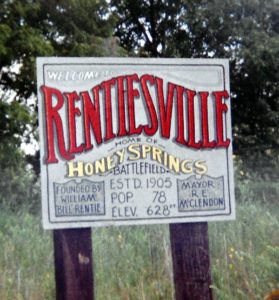
USDA Exhibit shown in an International Convention in Memphis and donated to our Museum by Ryan McMullin
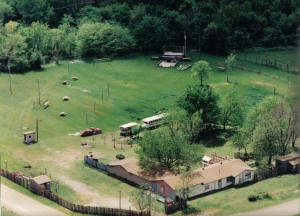
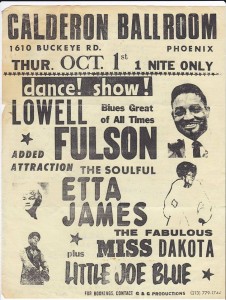

Selby keeps the work she and D.C. Minner started together moving forward – the Rentiesville Blues Festival, The Hall of Fame and now the Museum..not to mention the BAND Blues on the Move!
The Blues Club, now includes the D.C. Minner Rentiesville Museum
and Exhibit Black Towns To Blues Festivals! Open Sundays 1 – 5 pm
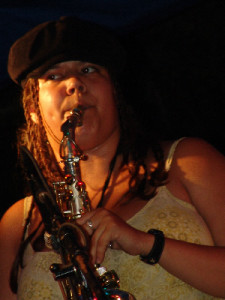 Rentiesville and BLUES CLUB fr first dcminnerblues web site
Rentiesville and BLUES CLUB fr first dcminnerblues web site

We hope to get this statue enlarged and set on the corner of D.C. Minner Street and John Hope Franklin Blvd by the OBHOF in Rentiesville. It was created by Selby Minner in the Bacone College Bronze class with Rose Myer.
Below: the migration of Blues Players west to form the
West Coast Blues… Biggest star was Lowell Fulsom, born outside of Tulsa

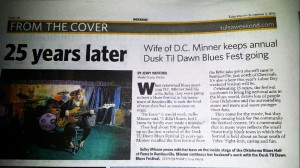
FROM ANOTHER POINT OF VIEW – from East Los Angeles
THIS IS THE COMPLETE PAGE from the old version of this website
Black Town Tours Map and DC and Rentiesville PRESS

